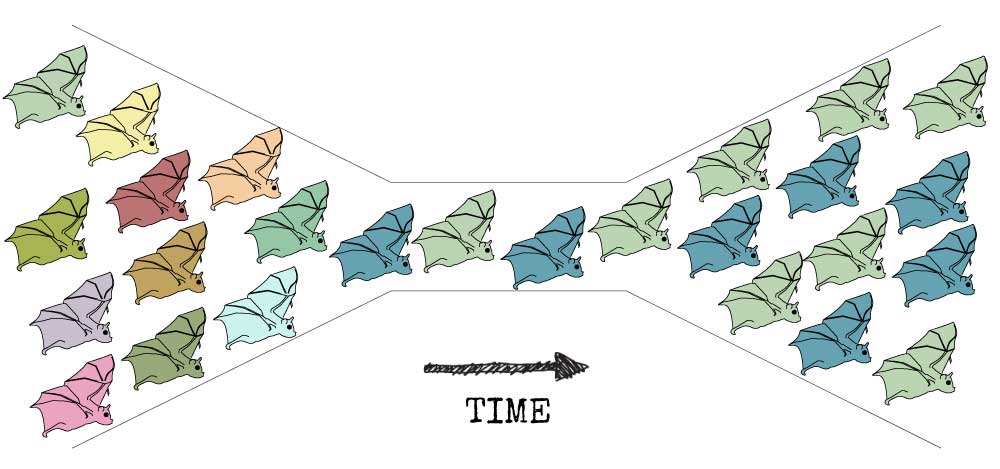For humans, urbanisation has generally been beneficial. Cities are often where people find better access to clean water and sanitation, better housing, employment and opportunities for education – hence extensive rural to urban migration.
For other species, the effects of urbanisation are mixed, and many urban ecologists have characterised species according to how successful they are in cities. This success often hinges on a species’ degree of synanthropy (how much it relies on resources provided by humans, deliberately or not). The biggest ‘losers’, which only use natural resources, are called urban avoiders – they’re usually the first to disappear from cities. The biggest ‘winners’ are called urban exploiters – they tend to be highly synanthropic and most abundant in cities. In between, there are urban adapters – many are edge-habitat specialists and they tend to be moderately synanthropic and most abundant at intermediate levels of urbanisation.
Singapore (SG) had already lost a substantial portion of its original tropical forest habitat (and likely much of its original bat fauna) even before extreme urbanisation further transformed the landscape. But it still has some 20 species of bats. One is Cynopterus brachyotis – the dog-faced fruit bat. And several observations suggest that this bat can probably be called an urban adapter. It’s definitely the most common fruit bat (and maybe the most common of all bats) in SG and it occurs pretty much everywhere along the urbanisation gradient. It roosts in natural foliage and in anthropogenic structures (at least in SG, not elsewhere). And it eats both native plants and introduced ornamentals.
If a species is an urban adapter, then we might reasonably expect it to be resilient to the impacts of urbanisation, no? Well, if we just look at this bat’s ubiquity and ecology, that does seem true. But recently, a group of my colleagues discovered that its genome tells a different story. One of gradually dwindling population size since the 4th century, followed by a sudden and extreme genetic bottleneck and reduction of effective population size around the time of the Anthropocene signal and start of urbanisation in the 1940s. That’s what we see from the composite figure below.

Individual dog-faced fruit bats at Singapore Zoo (photo by CHUA Li En Jacqueline)
These bats underwent a major loss in genome-wide heterozygosity (diversity of alleles at a given locus) between 1931 and 2011-12.
1 600 years ago, effective population size (Ne) was over 58 000. Then, it started gradually declining. By 1931, when historical samples were obtained, it was 1 469. Nine years later, we see a genetic bottleneck and by 2011-2012, it was down to 58.
That was a surprise. Because large declines in genetic diversity are often clues to impending doom – indeed, they’re fairly stereotypical among highly threatened species. Again, not what you’d expect in an urban adapter. I wondered how common this phenomenon is.
A bit of digging yielded another recent study that analysed genomic data for 44 mammal species across Canada and the US. The authors discovered similar genetic effects of urbanisation, including in some real synanthropes, such as the red fox (Vulpes vulpes) – the most successful urban carnivore (after domestic cats and dogs). The authors attribute the genetic effects to urban-related habitat fragmentation, which restricts movement and therefore gene flow. BUT… Their study also analysed data for 25 bird species, none of which exhibited genetic effects of urbanisation. Neither did the four bat species included in the mammal dataset. No surprise – being able to fly helps you (as a species) move among habitat fragments.
And yet, the dog-faced fruit bat, an apparent urban adapter in SG, may really be an extirpation in waiting. My lingering questions are how unique is this case, why this is bat less resilient than expected and what, if anything, can be done about this.

